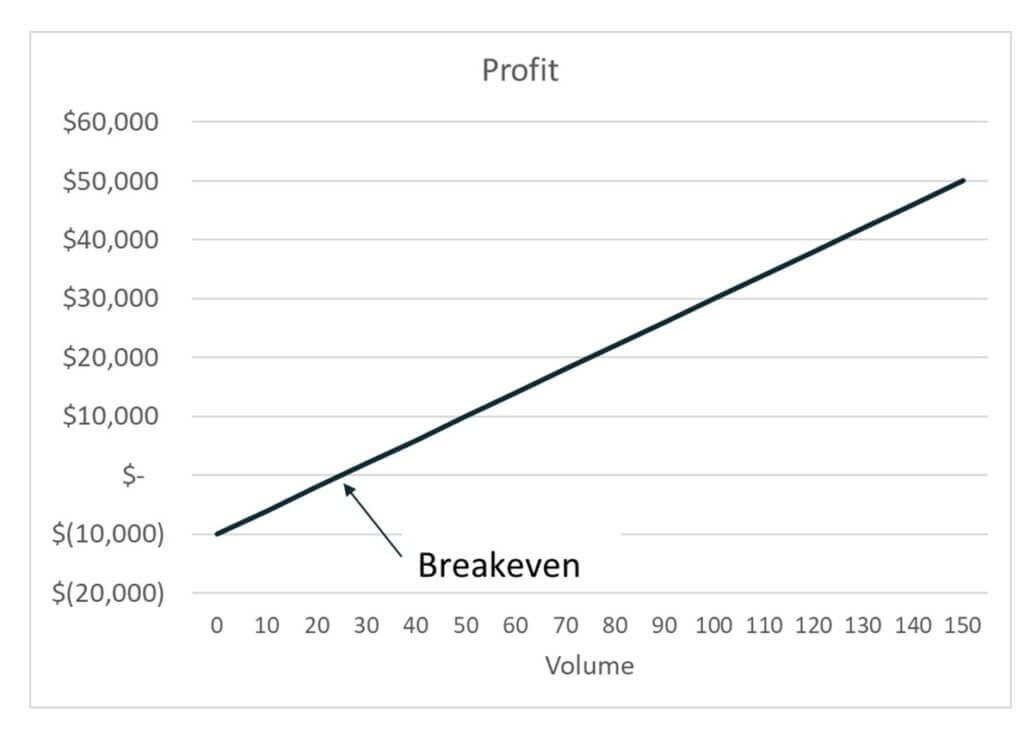Running a CVP analysis involves using several equations for price, cost, and other variables; these equations are plotted on a graph. CVP Analysis can be used by managers to help them decide on pricing policies, output levels, cost control strategies, and capital investments. It provides important information about how changes in costs and other factors will affect profitability as well as helps managers identify breakeven points for budgeting purposes.
How Poor Data & Analytics Access Hinders Manufacturing Cost Understanding – And What To Do About It
Unfortunately, this is not something that can be guaranteed in reality and will depend on external factors, including supply, demand, and competitor strategies. When carrying out CVP analysis, it’s important to remember that it makes certain key assumptions that don’t necessarily reflect reality, at least in the long term. The margin of safety shows you how much your sales can drop while still allowing your company to break even. To find the margin of safety, simply subtract the break-even amount for sales from the actual sales for your company.
Submit Your Info Below and Someone Will Get Back to You Shortly.
CVP analysis is a tool used extensively in both the planning and control functions of an organization. A financial professional will offer guidance based on the information provided and offer a no-obligation call to better understand your situation. Someone on our team will connect you with a financial professional in our network holding the correct designation and expertise. Our mission is to empower readers with the most factual and reliable financial information possible to help them make informed decisions for their individual needs. Our writing and editorial staff are a team of experts holding advanced financial designations and have written for most major financial media publications.
- When carrying out CVP analysis, it’s important to remember that it makes certain key assumptions that don’t necessarily reflect reality, at least in the long term.
- To obtain the contribution margin ratio, simply divide by total sales and selling price, respectively.
- This blog explains types of variance, how to calculate it, & provides analysis examples.
- The contribution margin can be used to cover the fixed costs and generate a profit.
What Is Cost-Volume-Profit (CVP) Analysis?
It shows that break-even point can be calculated by dividing fixed cost by the contribution margin per unit. Volume, the second component, reflects the business’s level of activity or output. Understanding the relationship between volume and costs is crucial for effective financial planning and resource allocation.
Which activity is most important to you during retirement?
The simplest form of the break-even chart, wherein total profits are plotted on the vertical axis while units sold are plotted on the horizontal axis. The total revenue line is plotted, running from $0 at zero sales volume to $150,000 at a sales volume of 6,000 units at $25 per unit. The units sold are plotted on the horizontal axis, while total revenue is shown on the vertical axis. CVP analysis provides valuable insights into a company’s financial performance and helps managers make informed decisions that maximize profits. Segregation of total costs into its fixed and variable components is always a daunting task to do.

ChartExpo charts are available both in Google Sheets and Microsoft Excel. Please use the following CTA’s to install the tool of your choice and create beautiful visualizations in a few clicks in your favorite tool.
For example, if the company only sells $30,000 of product, its total costs will be approximately $38,000 resulting in an $8,000 loss. As you can see from the example chart above, the fixed production costs are represented by the solid gray line and are constant across all levels of production. Identifying the break-even point’ the level at which revenue equals total costs’ helps you strategize to enhance profitability. Volume refers to the number of units sold or the activity level within a given period. Profit, on the other hand, represents the difference between revenue and total costs. The break-even point is important because it gives businesses a clear understanding of the sales volume they need to achieve to cover their costs and profit.
For these reasons, and as mentioned earlier, both the P/V graph and break-even chart are used alongside one another by financial managers. The P/V graph is a simple and convenient way to show the extent to which profits are affected by changes in the factors that affect profit. The intersection of the profit line with the horizontal line gives the break-even point. Points above the line measure profits while points below the line measure losses. The data used to prepare the break-even chart, as shown above, have also been used to prepare the P/V graph shown below. Finally, remember that the method assumes that all units made are going to be sold.
Computing the break-even point is equivalent to finding the sales that yield a targeted profit of zero. The first step required to perform a CVP analysis is to display the revenue and expense line items in a Contribution Margin Income Statement and compute the Contribution Margin taxation of rsus explained Ratio. The analysis is restricted to the relevant range specified and beyond that the results can become unreliable. In a real-world example, the founder of Domino’s Pizza, Tom Managhan, faced an early problem involving poorly calculated CVP in his book “Pizza Tiger”.

